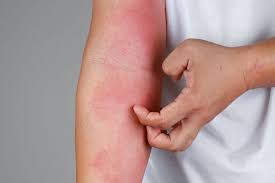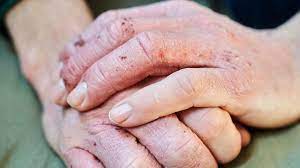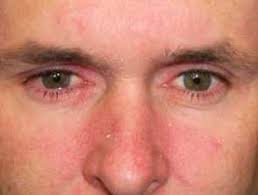Atopic dermatitis, Barrier, Environment, Hypersensitivity, Pathophysiology.
Root Cause of Disease
Atopic dermatitis (eczema) is a condition that causes dry, itchy and inflamed skin. It’s common in young children but can occur at any age. Atopic dermatitis is long lasting (chronic) and tends to flare sometimes. It can be irritating but it’s not contagious.
People with atopic dermatitis are at risk of developing food allergies, hay fever and asthma. Moisturizing regularly and following other skin care habits can relieve itching and prevent new outbreaks (flares). Treatment may also include medicated ointments or creams.
Symptoms
Atopic dermatitis (eczema) symptoms can appear anywhere on the body and vary widely from person to person. They may include:
- Dry, cracked skin
- Itchiness (pruritus)
- Rash on swollen skin that varies in color depending on your skin color
- Small, raised bumps, on brown or Black skin
- Oozing and crusting
- Thickened skin
- Darkening of the skin around the eyes
- Raw, sensitive skin from scratching
Causes
In some people, atopic dermatitis is related to a gene variation that affects the skin’s ability to provide protection. With a weak barrier function, the skin is less able to retain moisture and protect against bacteria, irritants, allergens and environmental factors — such as tobacco smoke.
In other people, atopic dermatitis is caused by too much of the bacteria Staphylococcus aureus on the skin. This displaces helpful bacteria and disrupts the skin’s barrier function. A weak skin barrier function might also trigger an immune system response that causes the inflamed skin and other symptoms. Atopic dermatitis (eczema) is one of several types of dermatitis. Other common types are contact dermatitis and seborrheic dermatitis (dandruff). Dermatitis isn’t contagious.
Home Remedies to treat Atopic Eczema
Remedy- 1:
Materials Used: Coconut oil

A person can apply virgin or cold-pressed coconut oil directly to eczema to help moisturize the area and reduce bacteria. A person should use it once or twice per day on damp skin.
Product Link: Coconut Oil
Remedy – 2:
Materials Used: Sunflower oil

Sunflower oil may help improve the skin’s protective barrier and reduce inflammation. A person should apply for it twice a day.
Product Link: Sunflower Oil
Remedy – 3:
Materials Used: Cardiospermum

Cardiospermum is a plant extract that may reduce inflammation, itchiness, and bacteria on the skin.
Product Link: Cardiospermum
Other Remedies
Tea Tree Oil
Tea tree oil has anti-inflammatory properties that could soothe irritation and is great for treating eczema. To use tea tree oil, you must first mix it with a carrier oil such as jojoba oil. This is because using tea tree oil in its undiluted state could cause certain side effects such as minor irritation.
Turmeric
Turmeric is one of the eczema home remedies in India. It is anti-inflammatory and has wound healing properties which makes it a great option when treating eczema. To use this herb, you can mix a spoonful of turmeric powder with some honey and apply it to the affected area. Let it sit for a few minutes before washing it off with water.
Apple Cider Vinegar
Eczema can also be treated using apple cider vinegar. To do this, add about two portions of apple cider vinegar to a warm bath. This will help in reducing inflammation on the skin and also reduce dryness.
Preventions
Developing a basic skin care routine may help prevent eczema flares. The following tips may help reduce the drying effects of bathing:
- Moisturize your skin at least twice a day: Creams, ointments, shea butter and lotions seal in moisture. Choose a product or products that work well for you. Ideally, the best one for you will be safe, effective, affordable and unscented.
- Using petroleum jelly on your baby’s skin may help prevent development of atopic dermatitis.
- Take a daily bath or shower: Use warm, rather than hot, water and limit your bath or shower to about 10 minutes.
- Use a gentle, non-soap cleanser: Choose a cleanser that’s free of dyes, alcohols and fragrance. For young children, you usually need only warm water to get them clean — no soap or bubble bath needed. Soap can be especially irritating to the skin of young children. For people of any age, deodorant soaps and antibacterial soaps can remove too much of the skin’s natural oils and dry the skin. Don’t scrub the skin with a washcloth or loofah.
- Pat dry: After bathing, gently pat the skin with a soft towel. Apply moisturizer while your skin is still damp (within three minutes).




